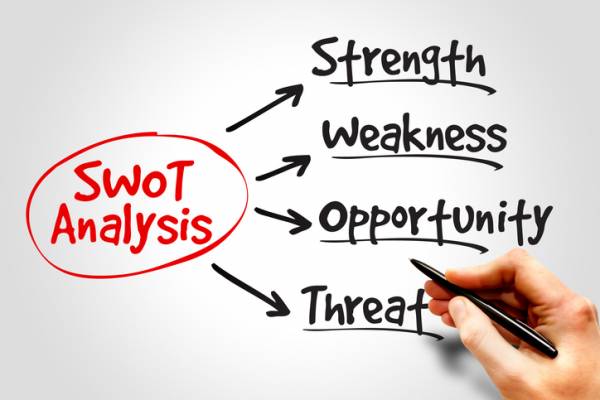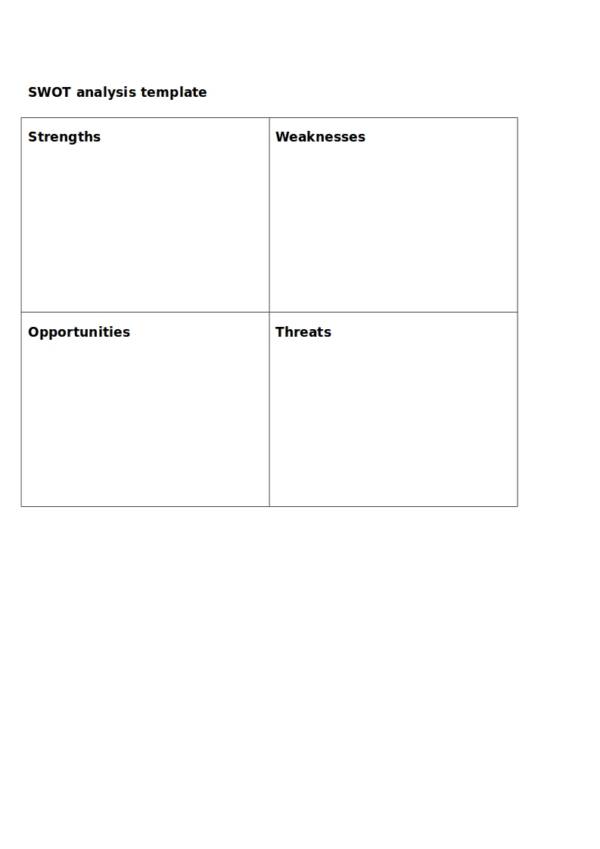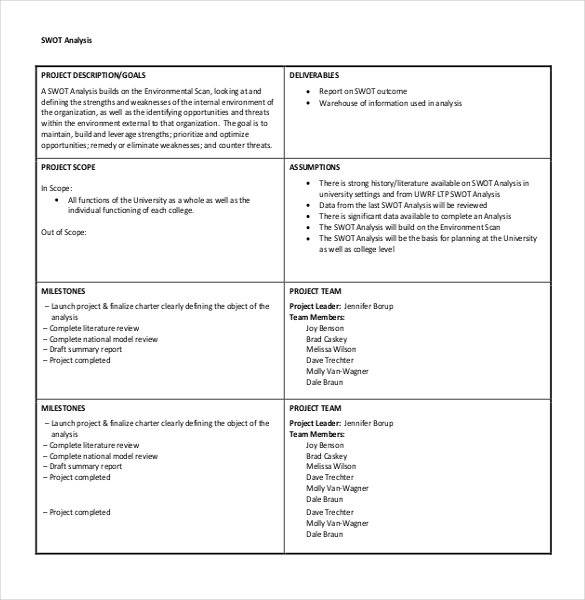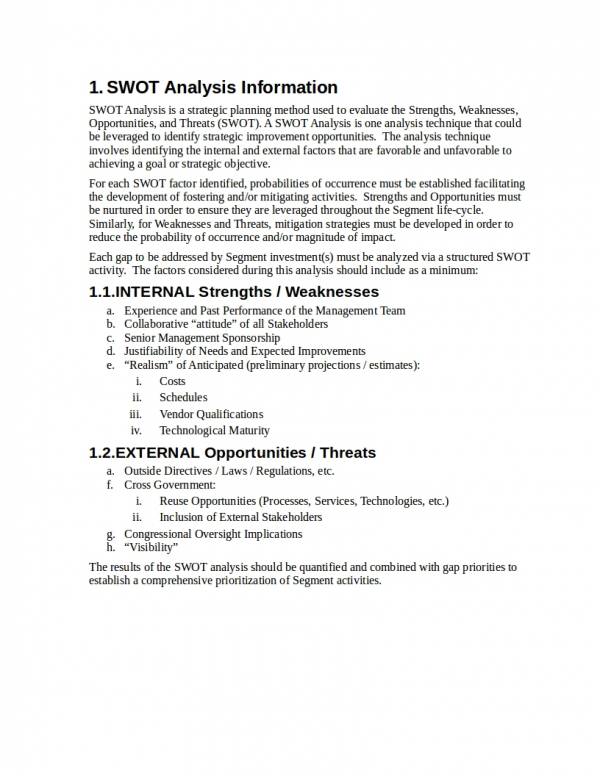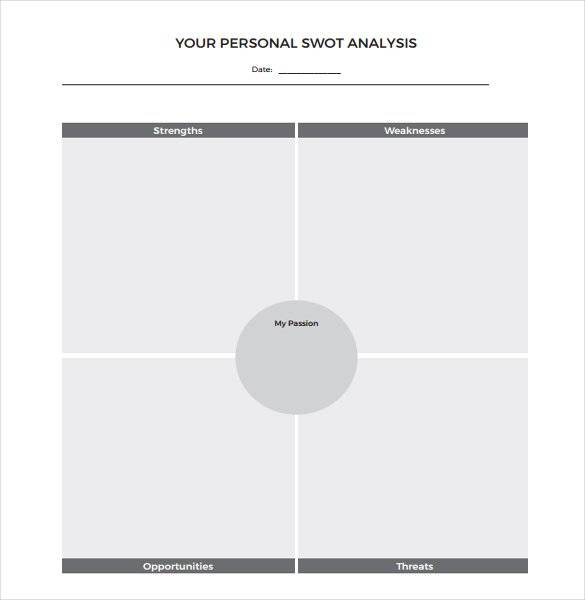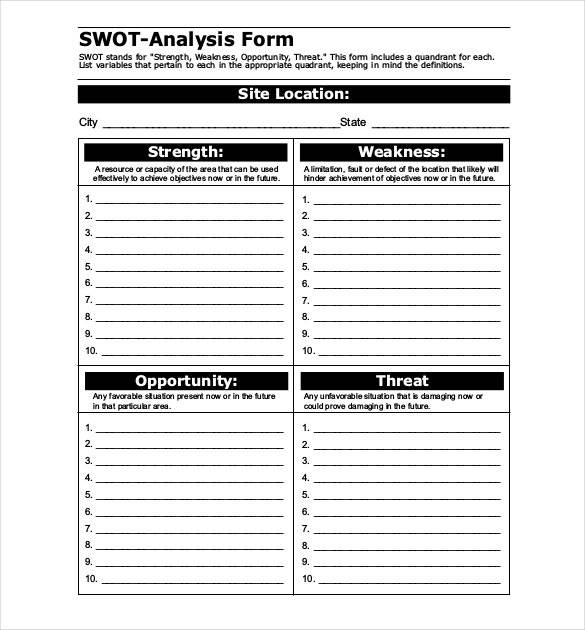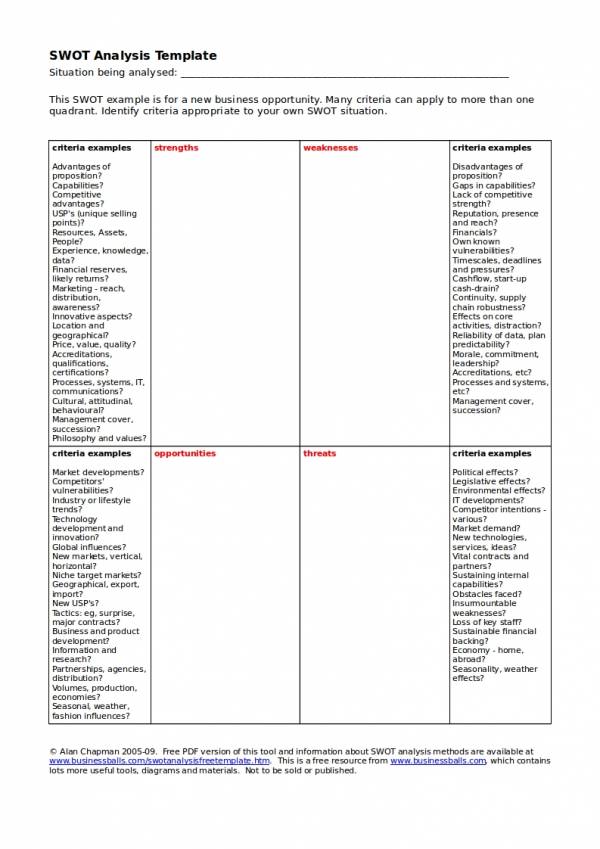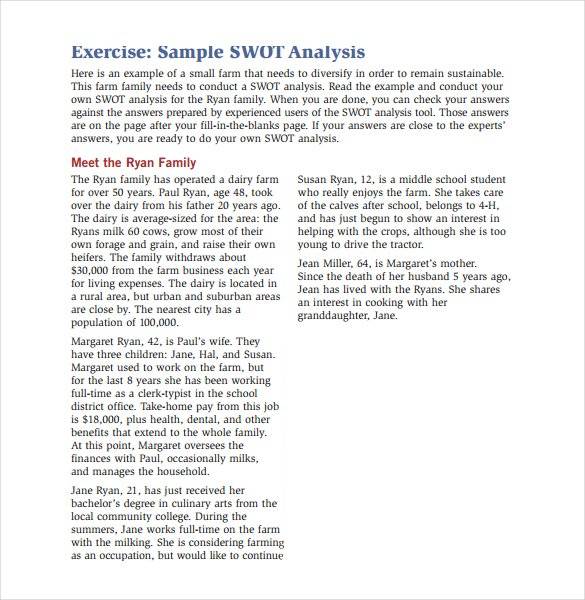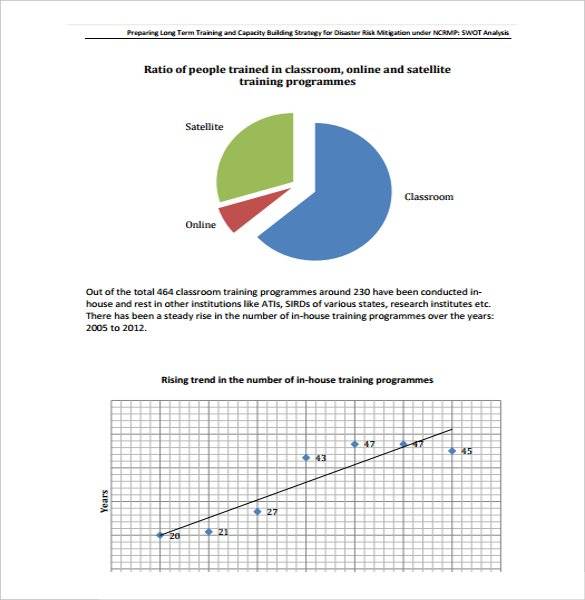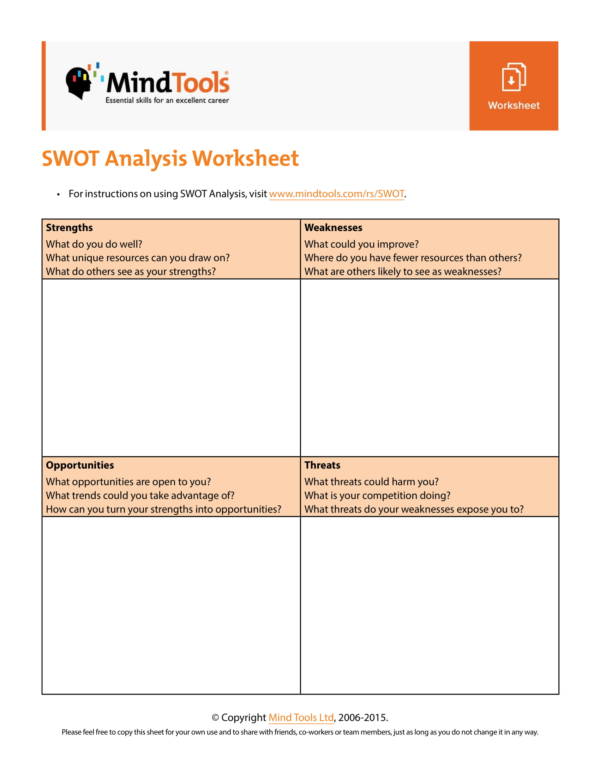The original reason why a SWOT analysis is developed is so that a number of people or a team of people can get involved with in the planning process. A SWOT analysis is a very useful tool that has helped a lot of companies or organizations in making improvement and making the right decisions for a particular endeavor.
A SWOT analysis has become known as a tool that has brought a number of businesses and individual to their success. As part of planning and decision making, this tool provides its users just the right information that they need to improve. Le us go ahead and further understand what a SWOT analysis is.
Editable SWOT Analysis Template
SWOT Analysis Template With Description
Veterans Affairs SWOT Analysis Template
Personal SWOT Analysis Template
Free SWOT Analysis Form
Business SWOT Analysis Template
What Is a SWOT Analysis?
A SWOT analysis is a high-level strategic planning that is mostly used by businesses and other entities to determine their strengths and weaknesses as well as identify the opportunities that they can take advantage of and the threats that they need to prevent or avoid. Planning is the first thing that should be done before any actions are carried out. A SWOT analysis as a part of the planning process is conducted as the start and throughout the strategic planning process. The good thing about a SWOT analysis is that it requires the involvement of all the members of a particular team in an organization where different opinions and output are provided. This becomes valuable data and later on turns into a criteria or basis for making important decisions.
There are other uses of a SWOT analysis and they are as follows:
- The primary use of a SWOT analysis is to be able to point out the things that an organization or entity is good at (strengths), the things they are not doing well with (weaknesses), the opportunities that await them and the threats that they may be facing at present or in the future.
- It is used to gather important and essential information that an organization needs to help them decide the best decision to make and the things that they must undertake.
- Through a SWOT analysis, an organization can take advantage of opportunities at the right time.
- It also allows for brainstorming of ideas among the members of a team or group to provide a credible ad effective output.
- A SWOT analysis helps an organization in building its strengths because you are able to tell the parts or areas of the organization that are doing an excellent job.
- Because you know your weaknesses, you can have it minimized which still works to your advantage. The tool helps you lay out a plan on how you can minimize those weaknesses or convert them into your strengths.
Aside from business and organizational issues, a SWOT analysis can also be used in addressing individual issues just like the following:
- issues related to finances and financial resources
- development of new products
- efficiency of operations
- issues with staffing
- product or service advertising
- structure of an organization
- issues having to do with the image of the business
The results of a SWOT analysis differs from one issue to another. That is why every SWOT analysis conducted is different. To help you learn more about SWOT analysis, we have related articles that can help you. They are Hospital SWOT Analysis Samples & Templates, Health Care SWOT Analysis Samples and Templates, and Financial Analysis Samples and Templates.
The Major Elements of a SWOT Analysis
It is pretty easy and obvious to tell what the major elements of a SWOT analysis is. SWOT is an acronym that stands for strengths, weaknesses, opportunities and threats. They make up the major elements of a SWOT analysis. These four elements are the things that need to be gathered and analyzed in a SWOT analysis. Simple but definitely useful.
Strengths
Strengths obviously refer to the things that an organization or entity is good at. By determining one’s strengths, formulating a plan and a strategy that will make an organization or entity do better is made easier. In addition, the plan will be more effective as it is based on something that they already know what to do and how to. They just need a little level up or some sort of strategy to get it to benefit them more. Related question that can be used as a guide when doing a SWOT analysis are:
- What things are you able to do better than anyone else or than your competitors?
- What advantages do you you think you or your organization have that others don’t.
- What do you see as a unique factor of your organization that allows you to get more clients?
- How does your target market see you or what do they think are your strengths?
Weaknesses
When you say weaknesses, it refers to the things that you or your organization is not doing well or is terribly doing wrong. n terms of business ventures, examples of weaknesses are not being able to get commit to your clients and their needs on time, not being able to provide the offered goods or products that a customer has ordered or requested and not being able to live up to your customer’s or client’s expectations because of some hindrance or issues. If you let these things to continue happening, then you will surely lose your business. Weaknesses are gathered and recorded to let the organization or entity know about them and so that they can device a way on how to correct them. In a SWOT analysis, weaknesses are determined to be converted to strengths. Some useful guide questions to determine weaknesses are:
- What things are you doing wrong?
- Why is it not working for you?
- What do you lack?
- What does your target market think your weaknesses are?
- What weaknesses that I have that other people think is not?
Opportunities
After determining the strengths and weaknesses of your business or organization, finding out the opportunities that you can take advantage is next. These opportunities will pave the way or give you a chance at making changes or improvements that will work for your business or organization. Why must you determine your opportunities? It is because it will serve as your cue or signal that it is about time or the best time to make good things happen. Opportunities don’t always open their doors to anyone, so if you can’t identify it then you have pretty much wasted your chance at it. Some guide questions that you can use are:
- What things are currently trending that will work for me or for my business?
- What is a big hit for my target market right now?
- What does my customer’s like?
Threats
Finally, the last major element, the threats. Well, some would say that if you get threats it is best to ignore them as most of the don’t really matter. But in business or in an organization, threats should be taken seriously as little threats can easily become serious threats in a blink of an eye. Examples of threats are the things that your competitors are doing, shortage in the supply of a certain product or food that you are selling, getting behind technological advancement, etc. Samples guide questions are as follows:
- What obstacles are you facing or your organization is facing?
- Are there any weaknesses that pose a serious threat to your business or organization?
- Is something causing your business or organization to gain a bad reputation?
- Do you have any cash-flow problems or debt problems?
Care should be taken when identifying these four major elements. One should also not assume that everybody’s strengths and weaknesses are the same as well as the opportunities and threats that they face. Other related articles that you may find useful are Restaurant SWOT Analysis Samples & Templates, Business Swot Analysis Samples, and Industry Analysis Samples.
SWOT Analysis Sample Exercise
SWOT Analysis Chart Format
SWOT Analysis Report Template
Example of Detailed SWOT Analysis
SWOT Analysis Worksheet Template
Reasons Why You Need a SWOT Analysis
Read the reasons listed below to be able to find out why you need a SWOT analysis.
- If you need to derive or come up with an assessment that is comprehensive and that gives you important bits of information, then a SWOT analysis is the tool that you need. By determining the strengths, weaknesses, opportunities and threats of an organization or entity, one can gather data that are all useful.
- A SWOT analysis is what businesses or organizations use in situations where they need to decide on something, set certain priorities, etc. This is the reason why it is considered a universal tool.
- The data you will be gathering in a SWOT analysis is based on real information, including the different ideas and opinions of the members of the group in an organization.
- It can be used to identify both internal and external factors that can affect or has an impact to the organization or business.
- Conducting a SWOT analysis is inexpensive and it also aims to get all the members of the organization involved in the planning process. This means it establishes teamwork.
- A SWOT analysis can be used in any areas. It can be used by businesses, financial institutions, educational institutions, in hospitals, in health care and many more.
Do you also use a SWOT analysis? If so, what are your reasons for using it? We hope that you find this article useful. You may check out our website for more related articles.
Related Posts
FREE 10+ Fishbone Root Cause Analysis Samples in PDF
FREE 11+ Cost Volume Profit Analysis Samples & Templates in PDF | MS Word
FREE 6+ Corporate Portfolio Analysis Samples in PDF
FREE 10+ Fault Tree Analysis Samples in PDF
FREE 10+ Comp Analysis Samples in PDF
FREE 10+ Fishbone Analysis Samples in PDF
FREE 10+ Individual Swot Analysis Samples in PDF
FREE 10+ 5 Year Analysis Samples in PDF
FREE 10+ Benefit Costs Analysis Samples in PDF
FREE 10+ Job Hazard Analysis Samples in PDF
FREE 10+ Primary Source Analysis Samples in PDF
FREE 10+ Critical Path Analysis Samples in PDF
FREE 10+ Competition Analysis Samples in PDF
FREE 10+ Activity Hazard Analysis Samples in PDF
FREE 10+ Risk Benefit Analysis Samples in PDF
